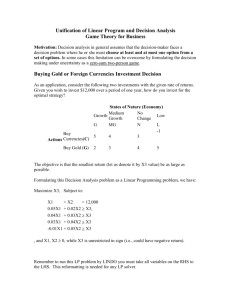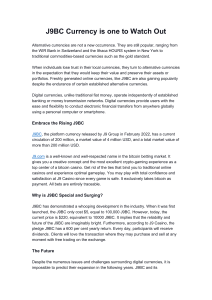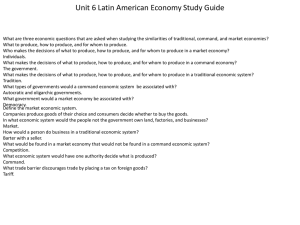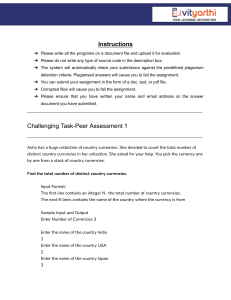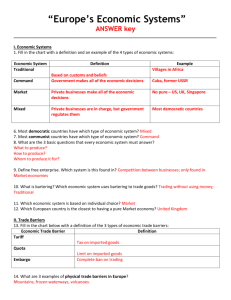Unification of Deterministic and Uncertain Models
advertisement
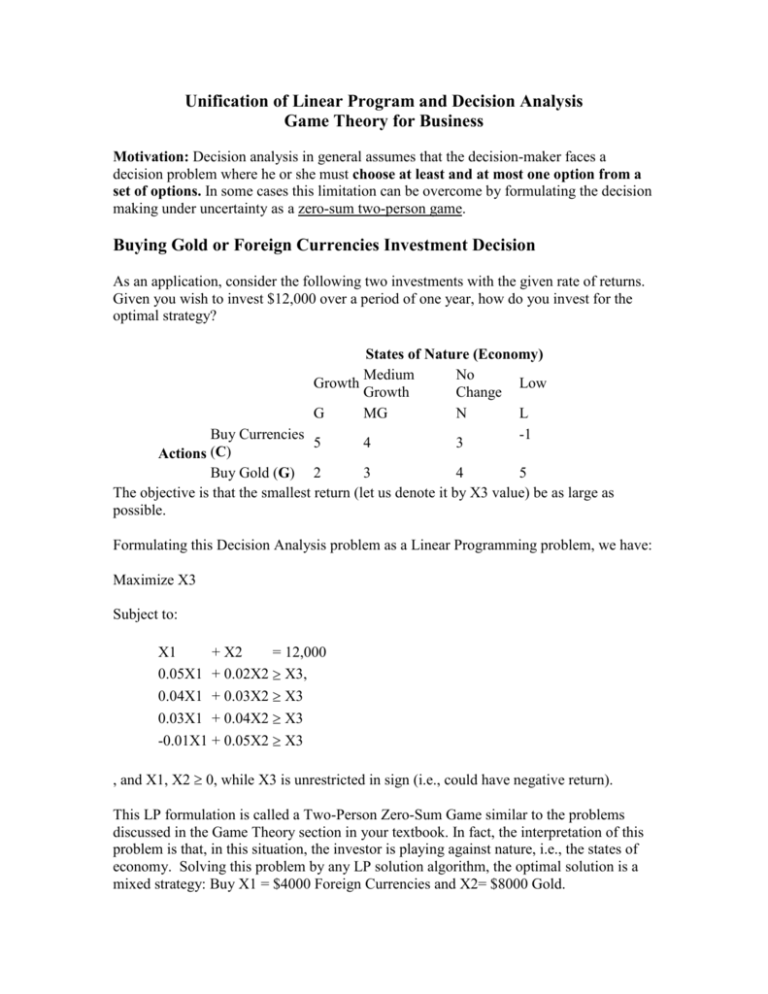
Unification of Linear Program and Decision Analysis Game Theory for Business Motivation: Decision analysis in general assumes that the decision-maker faces a decision problem where he or she must choose at least and at most one option from a set of options. In some cases this limitation can be overcome by formulating the decision making under uncertainty as a zero-sum two-person game. Buying Gold or Foreign Currencies Investment Decision As an application, consider the following two investments with the given rate of returns. Given you wish to invest $12,000 over a period of one year, how do you invest for the optimal strategy? States of Nature (Economy) Medium No Growth Low Growth Change G MG N L Buy Currencies -1 5 4 3 (C) Actions Buy Gold (G) 2 3 4 5 The objective is that the smallest return (let us denote it by X3 value) be as large as possible. Formulating this Decision Analysis problem as a Linear Programming problem, we have: Maximize X3 Subject to: X1 + X2 = 12,000 0.05X1 + 0.02X2 X3, 0.04X1 + 0.03X2 X3 0.03X1 + 0.04X2 X3 -0.01X1 + 0.05X2 X3 , and X1, X2 0, while X3 is unrestricted in sign (i.e., could have negative return). This LP formulation is called a Two-Person Zero-Sum Game similar to the problems discussed in the Game Theory section in your textbook. In fact, the interpretation of this problem is that, in this situation, the investor is playing against nature, i.e., the states of economy. Solving this problem by any LP solution algorithm, the optimal solution is a mixed strategy: Buy X1 = $4000 Foreign Currencies and X2= $8000 Gold.
